Community Gardens create a sense of community and place, and promote community health and wellbeing in busy urban settings. This garden has been created for community, patients, carers and staff to come together, relax and participate in physical activity in a safe and inclusive outdoor setting, close to the hospital and community services.
Master planning principles for the Randwick Campus Redevelopment have informed the design concept for this garden, including enhancing the cultural value of community infrastructure and using the natural environment for healing.
The La Perouse Aboriginal Community is the longest functioning and discreet Aboriginal Community in Sydney. In 1995, Aboriginal artefacts were uncovered close to the Prince of Wales Hospital Barker Street entrance dating back to at least 8,000 years. The Randwick Hospitals Campus recognises the significance of the La Perouse Aboriginal community’s continued connection to country and are proud to have partnered with Gujaga and the Dharawal Language Program to develop the ‘Bush Medicine’ theme for this community garden.
The native species present in this garden have been chosen for their medicinal potential and cultural significance for the Bidjigal and Gadigal peoples, who traditionally occupied the eastern suburbs and coastal areas of Sydney.
.png.aspx?width=1100&height=567) Plant Species found In Community Garden
Plant Species found In Community Garden
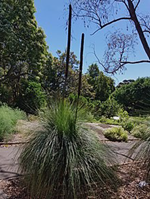
Grass Tree “Blackboy” (Xanthorrhoea Australis)
Garrara
This multi-use plant provides water resistant resin and spear shafts for fishing spears. Aboriginal men made floating fishing spears from the stems of these plants, which were then used by young children when learning to spear fish.
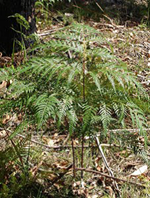
Braken Fern (Pteridium Esculentum)
Guragaa
This plant can be used for both medicinal and consumption purposes. The young shoots can be crushed and rubbed on your skin to use as an insect repellent and relieve from insect bites. When prepared properly the root can be eaten and is known to have a nutty flavor.
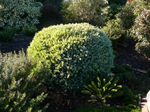
Coastal Tea Tree (Leptospermum Laevigatum)
Baan Baan
This plant is found throughout coastal Sydney and is used as a medicinal insect repellent. This plant is also used as a tracker to tell when shellfish are in season. When fully grown, the branches of the tree can be used to make a shelter.
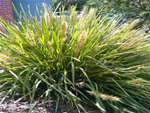
Basket Grass (Lomandra Longifolia)
Garinlii
This multi-use plant is the source of a variety of resources for the Aboriginal people. The fleshy (white) part of the leaf shoot and small seeds can be used for food purposes, while the leaves can be weaved into eel traps, baskets and string. The plant is also a good place to source small marsupials and reptiles.
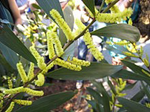
Sydney Golden Wattle (Acacia Longifolia)
Namaraag
The flowering plant signals when and where to look for lobsters (yangga). The flower indicates when the ancestral being, the whale (burri burri) is on the move travelling up and down the coast looking for his vessel (barangga).
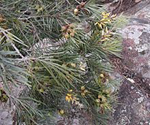
Narrow leaf (Persoonia Linearis)
Djiibang
This plant is used for food and medicinal purposes. The berries are able to be eaten, while the sticky juice and fibrous material of the unripe fruit seed is put on burns, scratches and rashes. This plant is also a common home for small possums, bandicoots and wallabies.
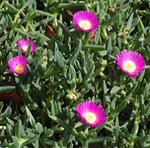
Pig Face (Carpobrotus Glaucescens)
Naamba
The liquid from the leaves of this plant can be used to soothe blisters and burns. The flowers and the sweet centre of the ripe purple fruit can be eaten, and the centre also indicates when school of tailor are in season and can be caught at shallow beach areas.
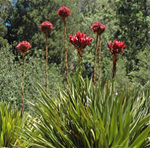
Gymea Lily (Doryanthes Excelsa)
Gayiima
The long leaves of the Lily are used to make string and the long flower stem is used for a short-term fishing spear. When the large red flower blooms, it is a sign that a certain saltwater crab can be collected after laying its eggs.
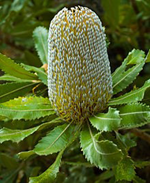
Banksia “Honeysuckle” (Banksia spp)
Guriidja
The Banksia flower provides a sweet drink when collected in the morning, while the cobs are used to keep fires going for a long time. The Aboriginal people have an old story that tells us why the banksia looks the way it does.